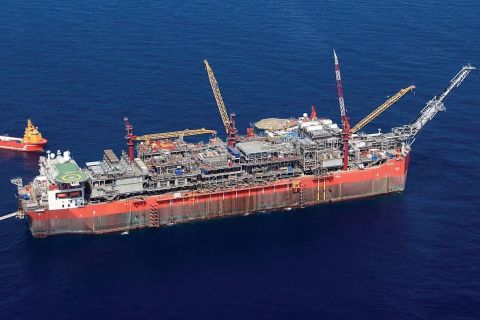The National Petroleum Council's recent study predicting U.S. natural gas demand will grow to 29 trillion cubic feet per year by 2010 is too conservative, says Matthew R. Simmons, president of the Houston-based investment banking firm Simmons & Co. International and a committee chairman for the NPC study. "I think that we have accidentally grossly underestimated inherent demand," Simmons told the Marine Technology Society in Houston. He served as chairman of the NPC committee that studied gas demand. Although the study involved numerous industry representatives and what he called serious work worth millions of dollars, Simmons said he suspects flaws in the model used. The growth of electricity in North America will trigger gas demand, the NPC said. Simmons agrees. "We are in the midst of a major sea change for natural gas," he maintained. The annual growth of U.S. electricity demand for the last 25 years has been 2.7%. But Simmons noted that the NPC study model used 2.1% annual growth and a price of $3 per thousand cubic feet. He suggested that it's possible U.S. demand for gas could reach 30 trillion cubic feet in 2005, not 29 Tcf in 2010. "It's a powerful number, based on just a bunch of little assumptions. At any rate, what is also most interesting about that is that it seems pretty clear that America has left itself with literally no trap door" regarding gas supply needs, Simmons said. "It probably turns out that we just can't grow electricity quite like we think. I really do think that we are entering into a decade that we will look back at and call the energy Olympics. We just never had to run as fast as we'll have to do over the next 10 years." Athletes train for 10 years before they reach the Olympics, while the oil and gas industry has not been building rigs or adding people during the 1990s, he added. "We are going to enter the energy Olympics with a rotten infrastructure and almost no people. I come back to the data problem." The day before the Marine Technology Society meeting, Simmons participated in a roundtable discussion on crude oil market data transparency with Department of Energy Secretary Bill Richardson at the University of Houston's Energy Institute. Simmons has repeatedly criticized the Paris-based International Energy Agency for contributing to the oil price collapse of 1998 and early 1999. The IEA reported some 700 million "missing barrels" of oil had come onto the marketplace before prices could rise. In its final report last year, the IEA said the missing barrels would be consumed by the end of 1999. Mistakes and uncertainty in data collection contribute to price volatility, Simmons maintained. He praised the DOE's efforts at reviewing the data collection system, adding, "I don't think this industry has the tolerance for another bust or boom." During a Jan. 20 speech to the Calgary Society of Financial Analysts in Alberta, Simmons predicted a West Texas Intermediate oil price of $30 and a Henry Hub gas price of $3.25 per million Btu by the end of 2000. Simmons cautioned that he tries to avoid specific price forecasts. "Remember that if the weather next November and December is mild, I will probably only be off in my gas guess by about 35% to 50%," Simmons said in his Calgary speech. He also called his oil price forecast "a guess." -Paula Dittrick
Recommended Reading
TotalEnergies Starts Production at Akpo West Offshore Nigeria
2024-02-07 - Subsea tieback expected to add 14,000 bbl/d of condensate by mid-year, and up to 4 MMcm/d of gas by 2028.
Well Logging Could Get a Makeover
2024-02-27 - Aramco’s KASHF robot, expected to deploy in 2025, will be able to operate in both vertical and horizontal segments of wellbores.
Shell Brings Deepwater Rydberg Subsea Tieback Onstream
2024-02-23 - The two-well Gulf of Mexico development will send 16,000 boe/d at peak rates to the Appomattox production semisubmersible.
E&P Highlights: Feb. 26, 2024
2024-02-26 - Here’s a roundup of the latest E&P headlines, including interest in some projects changing hands and new contract awards.
Remotely Controlled Well Completion Carried Out at SNEPCo’s Bonga Field
2024-02-27 - Optime Subsea, which supplied the operation’s remotely operated controls system, says its technology reduces equipment from transportation lists and reduces operation time.





